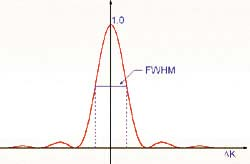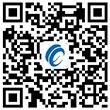Parameters For NLO Crystal Selection
NLO Process Phase-Matching Type and Angle, deff
Power or Energy, Repetition Rate Damage Threshold Divergence Acceptance Angle Bandwidth Spectral Acceptance
Beam Size Crystal Size, Walk-Off Angle
Pulse Width Group Velocity Mismatching
Environment Moisture, Temperature Acceptance
Crystal Acceptance
If a laser light propagates in the direction with angle △θ to phase matching direction, the conversion efficiency will reduce dramatically (see the figure right ). We define the acceptance angle (△θ) as full angle at half maximum (FAHM), where θ = 0 is phase-matching direction. For example, the acceptance angle of BBO for type I frequency doubling of Nd:YAG at 1064 nm is about 1 mrad-cm. Therefore, if a Nd:YAG laser has beam divergence of 3 mrad for frequency-doubling, over half of the input power is useless. In this case, LBO may be better because of its larger acceptance angle, about 8 mrad-cm. For NCPM, the acceptance angle is normally much bigger than that for CPM, for example, 52 mrad-cm1/2 for type I NCPM LBO.
In addition, you have to consider the spectral acceptance (△λ) of crystal and the spectral bandwidth of your laser; crystal temperature acceptance (△T) and the temperature change of the environment.

Walk-Off
Due to the birefringence of NLO crystals, the extraordinary wave (ne) will experience Poynting vector walk-off. If the beam size of input laser is small, the generated beam and input beam will be separated at a walk-off angle (ρ) in the crystal and it will cause low conversion efficiency. Therefore, for focused beam or intracavity doubling, the walk-off is a main limitation to high conversion efficiency.






